| Posted | Message |
|---|
Paul Bellamy
9/27/2008 2:36:08 PM | I found the official formation assembly procedures the other day, so I thought I'd try to build the various types with my B-17G pattern:
This is how the normal 8AF Group Formation of 18 aircraft looks when assembled in my CAD application:

There IS order in the apparent chaos.....
I plonked the whole thing into Google Earth to give me something in the background:

This shows the three elements more clearly. The lead squadron is centre-right, low squadron bottom right and the high squadron top left. Each element is built up of two vics of three Fortresses.
While I had Google Earth open, I placed the formation at a suitable location, 5000' above the splasher beacon at Cromer (Mundlesley) on the Norfolk coast, heading out on the track for mission 96 (Berlin).
Photos in the next post......
Paul Bellamy

|
Paul Bellamy
9/27/2008 2:42:24 PM | This image shows the Lead and Low squadrons, with the Norfolk coast heading southwards behind the formation:

And again, from a slightly lower angle:

In both images the High squadron is out of shot at the top right of the screen. This is a limitation imposed by Google Earth when placing modelled objects at altitude...... you can either see all the object but from a distance, or part of the object from not so far away, before the object simply vanishes.....
All the best,
Paul Bellamy

|
Jackie Sharp Sheflin
9/27/2008 4:12:34 PM | Paul,
What a terrific thing to see. It puts things in a better perspective.
Jackie

|
Paul Bellamy
9/27/2008 5:59:50 PM | Thanks Jackie,
The formation pattern illustrated is the Compact Group Formation used from April 1943.
I'm just arranging a decent set of end-on views to show how that formation was laid out.
Each of these Group Formations were a smaller part of the Wing Formation, itself a component of the entire Bomber Stream, and were separated from the next Group "box" by 1.5 miles, with a 100' height separation between the highest element of the leading box and the lowest of the trailing one. Initially each box was 1.5 miles and 100 feet above and to the right of the one in front, but by late 1943 each box was arranged in a V pattern either side of the lead group's box.
There was a much larger formation used in the last few months of ETO operations, with 36 aircraft per group.
I'll get that built shortly.
All the best,
Paul
Paul Bellamy

|
Paul Bellamy
9/27/2008 6:34:16 PM | Compact Group Formation:
Top View
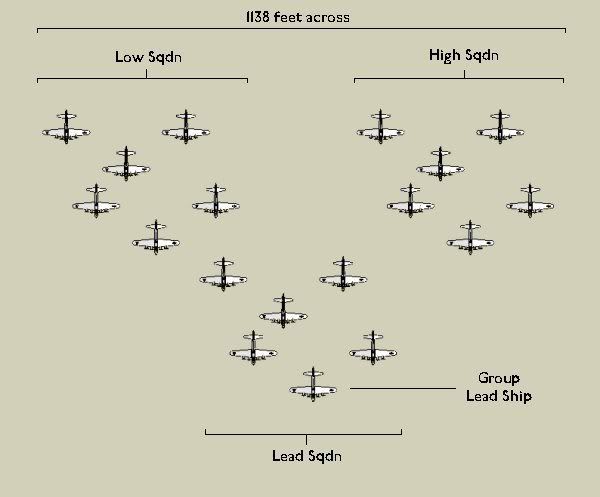
Front View
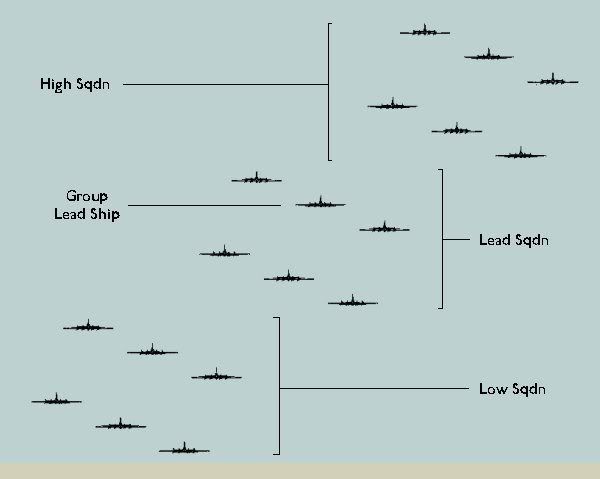
Side View
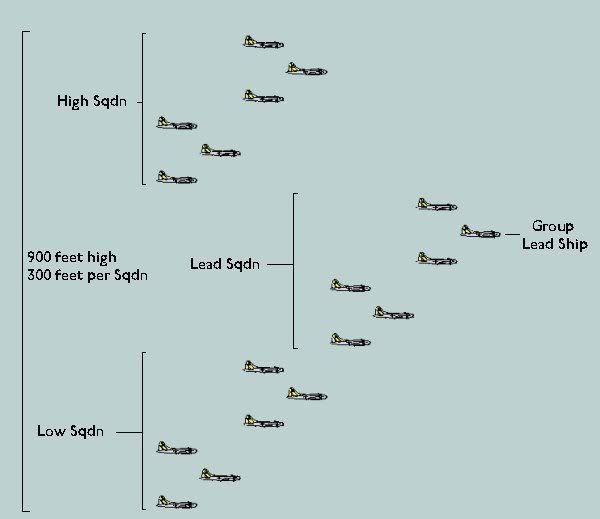
Paul Bellamy

|
Jackie Sharp Sheflin
9/27/2008 7:51:36 PM | Paul,
Now you have me curious. How can you find out which planes flew in which position or did it change with each mission?
Jackie

|
Paul Bellamy
9/28/2008 6:47:42 PM | Jackie,
The "Plan" was to have three of the four squadrons in a group flying on any given mission, with the fourth stood down on rotation.
As things panned out, aircraft and/or crews from the "off duty" squadron could be called into action depending on circumstances, and on many occasions all four squadrons flew, especially on "Maximum Effort" missions.
Squadrons would take the Lead element position on rotation too, and the lead crew in each squadron would also rotate, albeit within a small circle of top-line crews.
Within the Combat Wing, each Bomb Group would rotate between High Group, Low Group and Lead Group also.
The individual aircraft and crews, and the aircraft's position, within the Group formation were issued on "flimsies" to each flight crew, and these would be archived as part of the Group's respective Mission Report along with the Loading Lists of each crewmember and their position on each aircraft.
All the best,
Paul
Paul Bellamy

|
Paul Bellamy
9/29/2008 5:52:07 PM | 20 Aircraft Group Formation
This formation was introduced in mid 1943 to add another two Forts in the high-high and low-low positions, usually referred to as "Tail-end Charlie". The first 401BG missions would probably have used a version of this formation when required. The Lead Squadron still contained six planes, but they were positioned slightly differently from the 18-plane formation, and the high and low squadrons were brought forward, in line with the trailing elements of the lead squadron.
Top View:
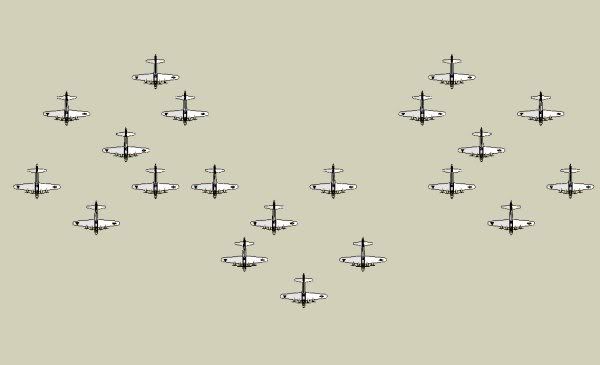
Front View:
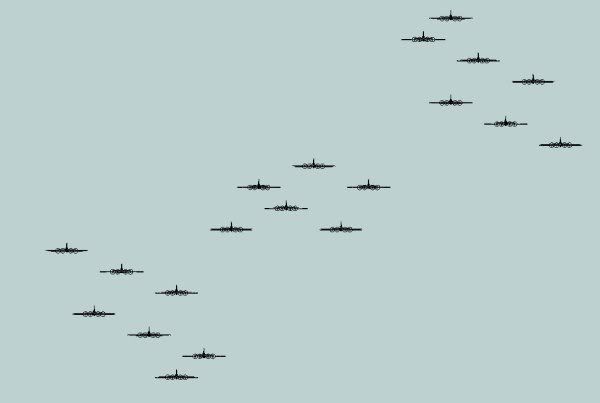
Side View:
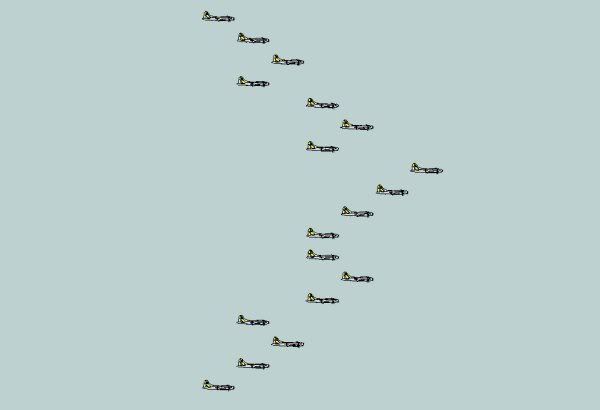
Paul Bellamy

|
Paul Bellamy
9/29/2008 5:55:33 PM | Some rough "in-flight" views of the 20-plane Group Formation "somewhere over north-west Germany", now with added contrails. : )
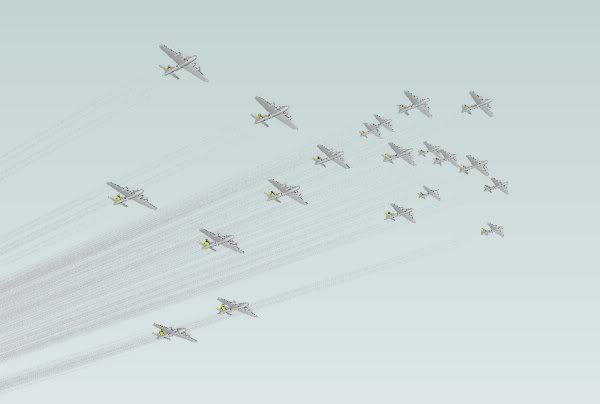
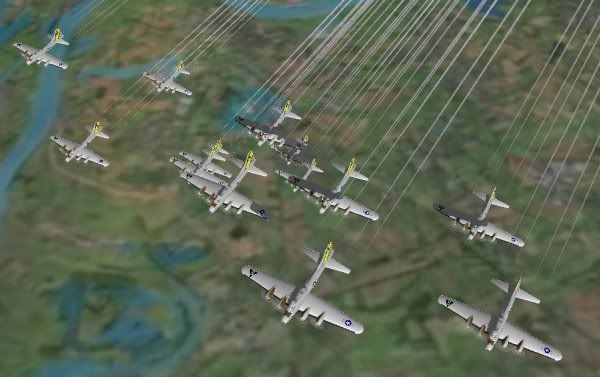
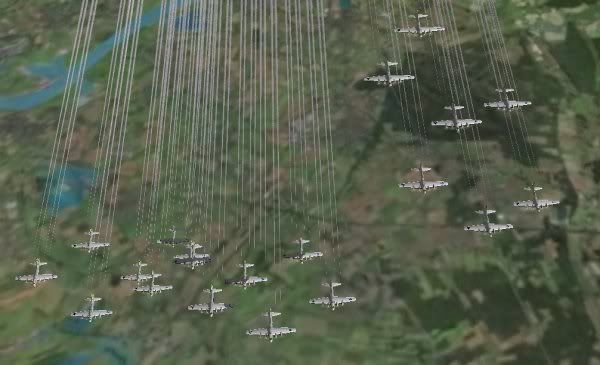
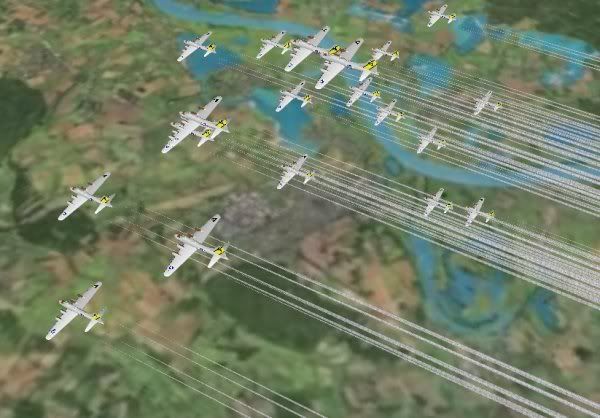
All the best,
Paul
Paul Bellamy

|
EDanaII
9/30/2008 9:26:00 AM | Very nice, Paul. Very nice. 😎

|